Abstract
Conway, T. W. (The University of Texas, Austin), E. M. Lansford, Jr., and W. Shive. Influence of phenylalanine analogues upon bacterial accumulation and incorporation of phenylalanine. J. Bacteriol. 85:141–149. 1963.—Phenylalanine accumulation and its relation to phenylalanine incorporation into trichloroacetic acid-insoluble material in Escherichia coli 9723 were studied with a variety of structural analogues of phenylalanine. Inhibition of phenylalanine-C14 incorporation was exerted by analogues only when their concentration was sufficient to prevent the formation of 85 to 90% of the accumulated intracellular phenylalanine “pool,” indicating that less than about 15% of the “free amino acid pool” of phenylalanine is essential for maintaining a normal rate of incorporation of phenylalanine into protein. Although certain analogues having high activity in inhibiting accumulation of phenylalanine showed low activity in preventing incorporation, no analogue was found that solely prevented accumulation.
Full text
PDF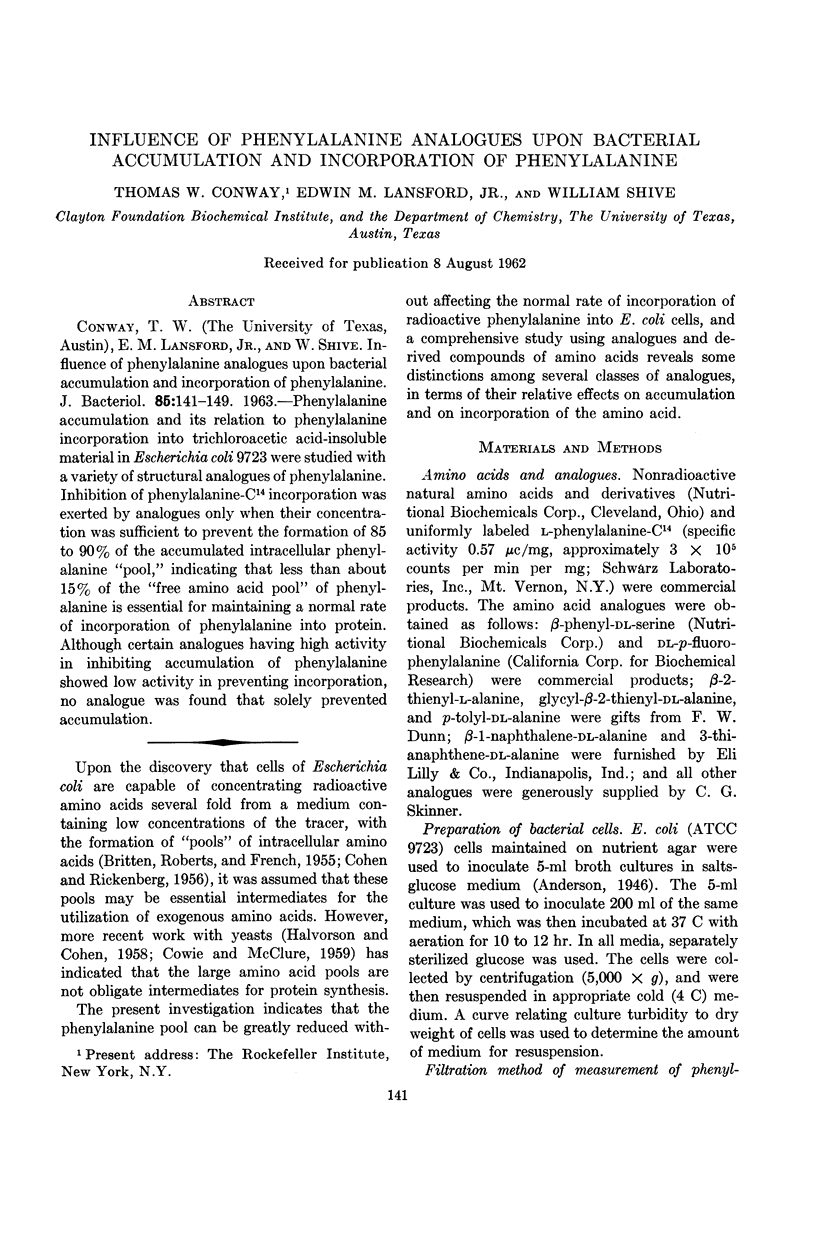
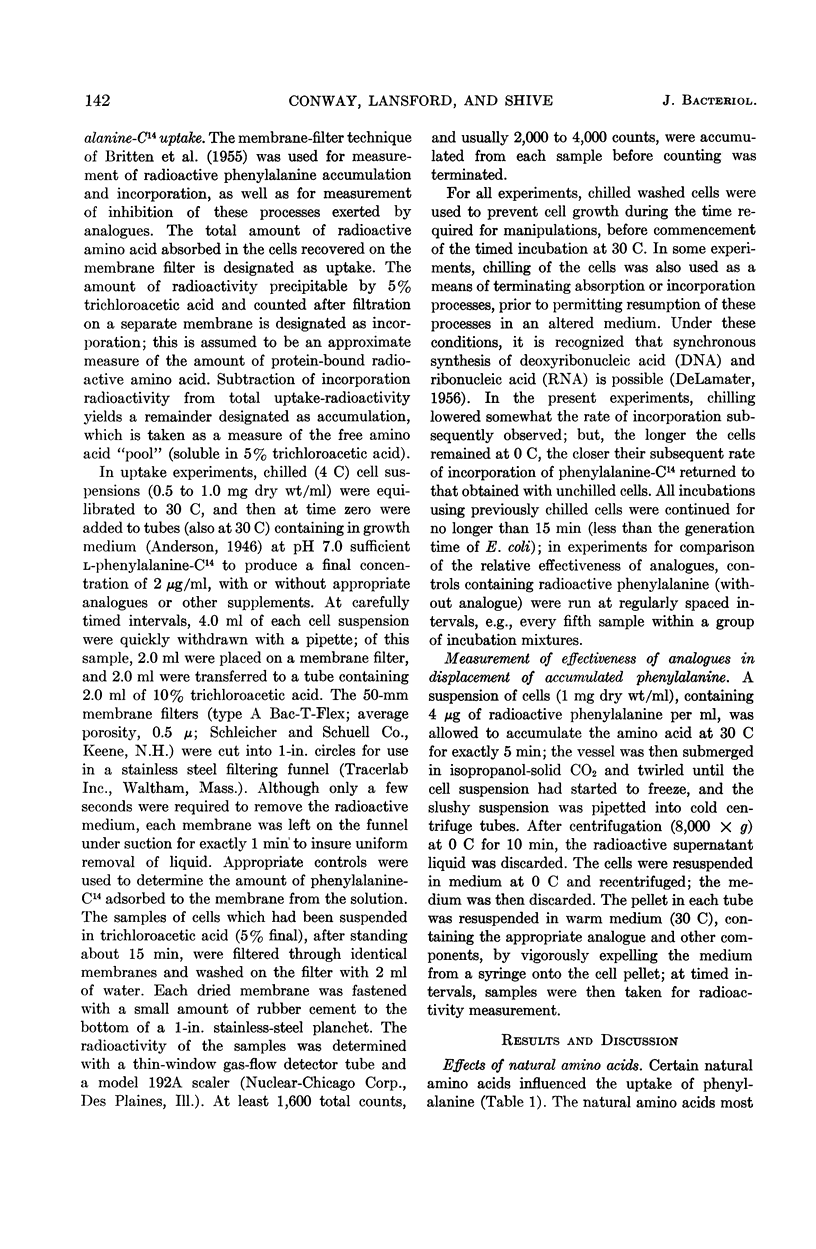

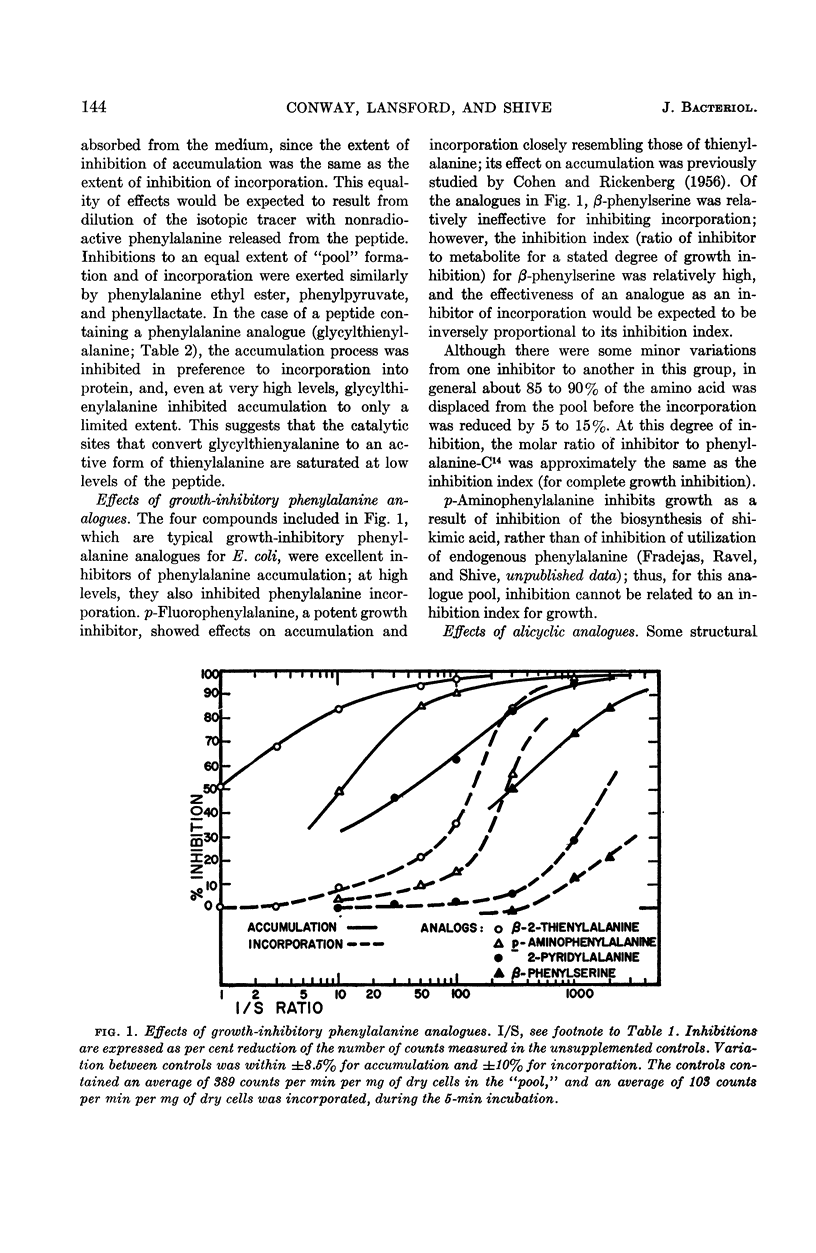
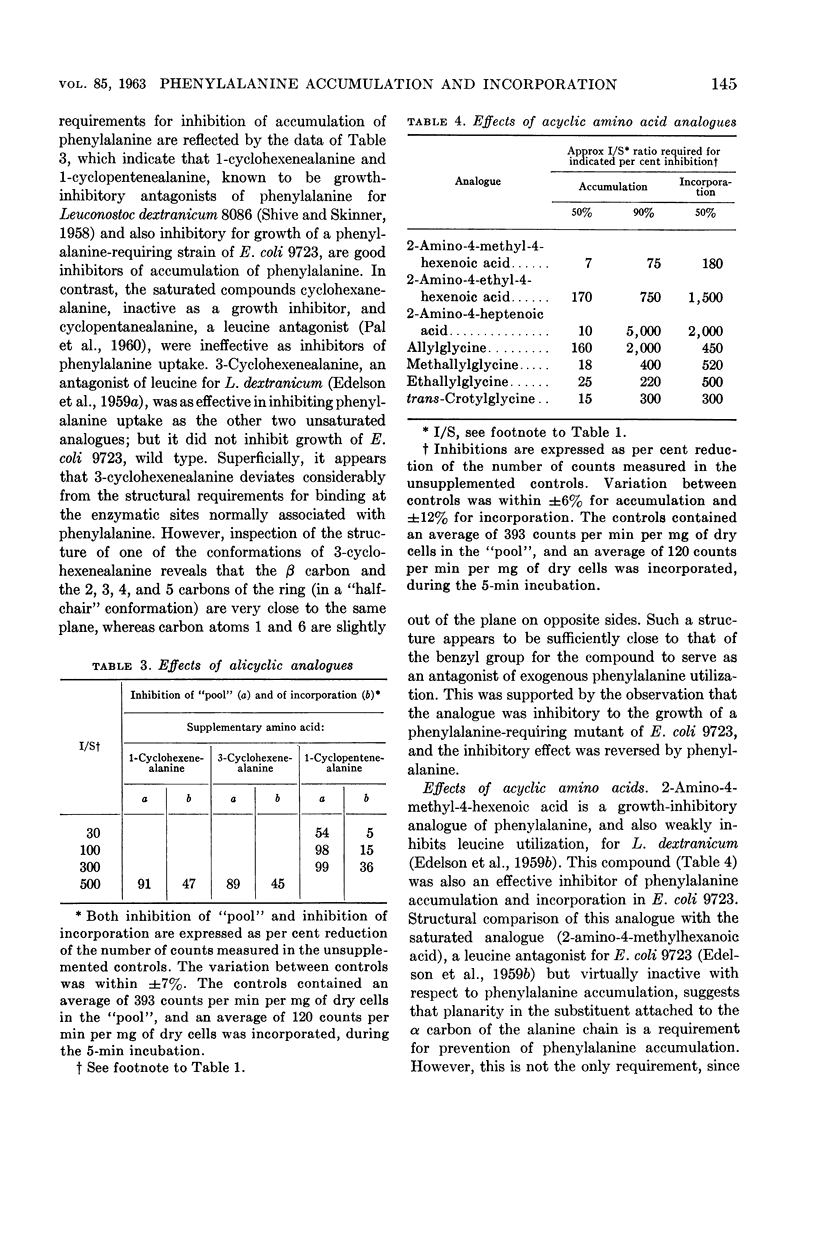
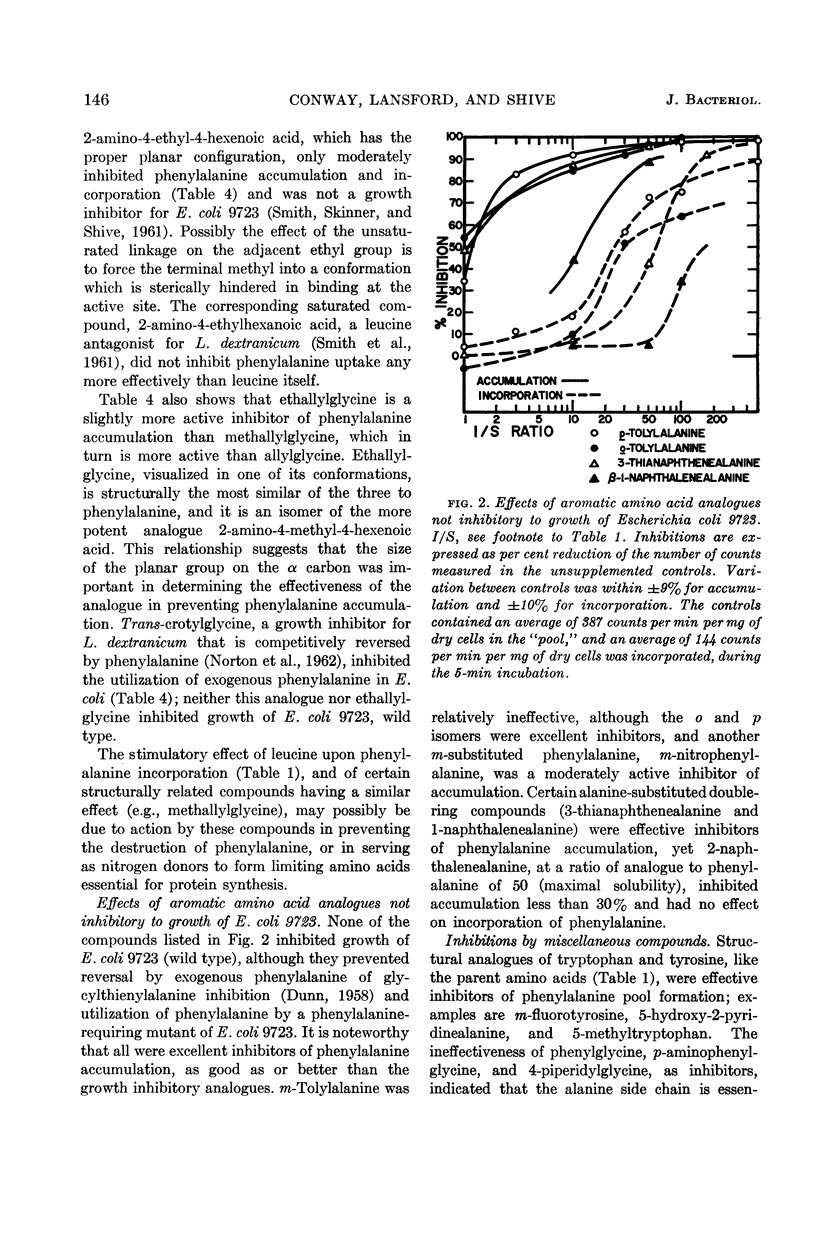
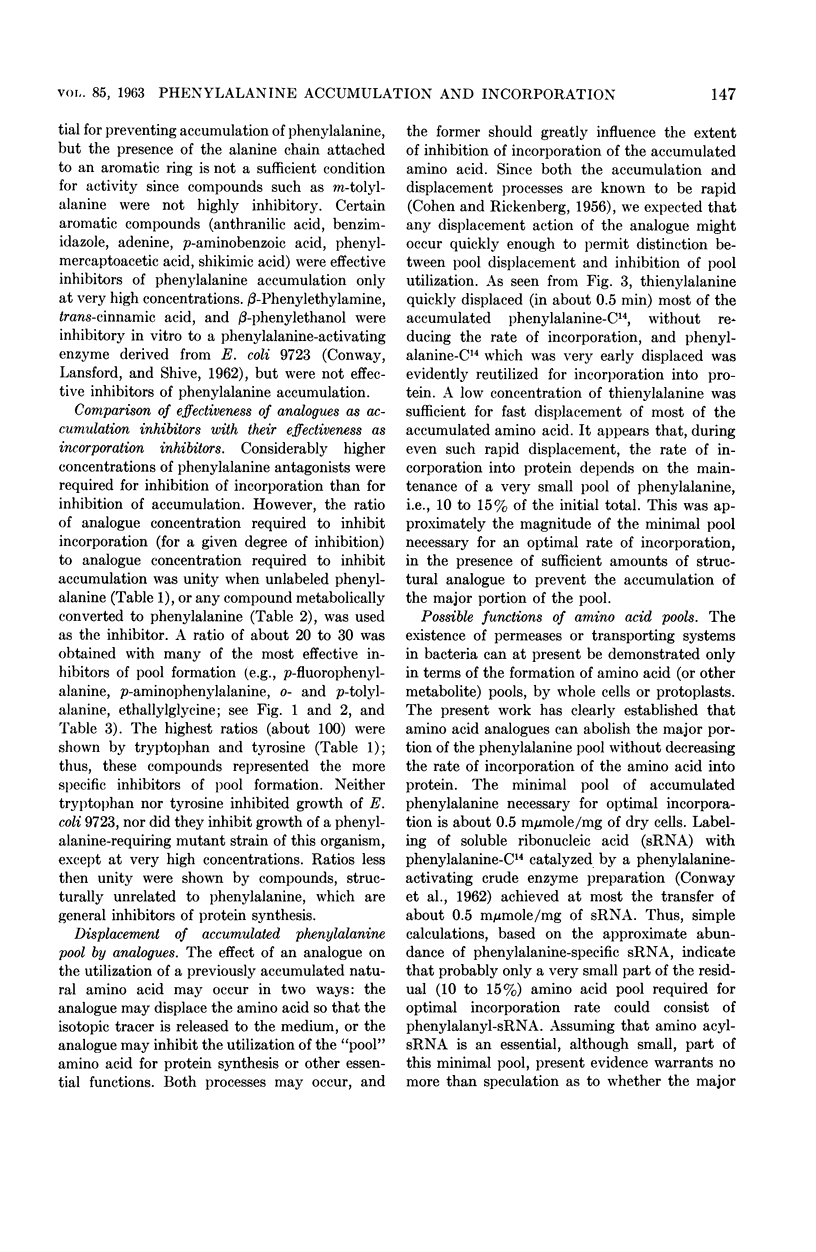
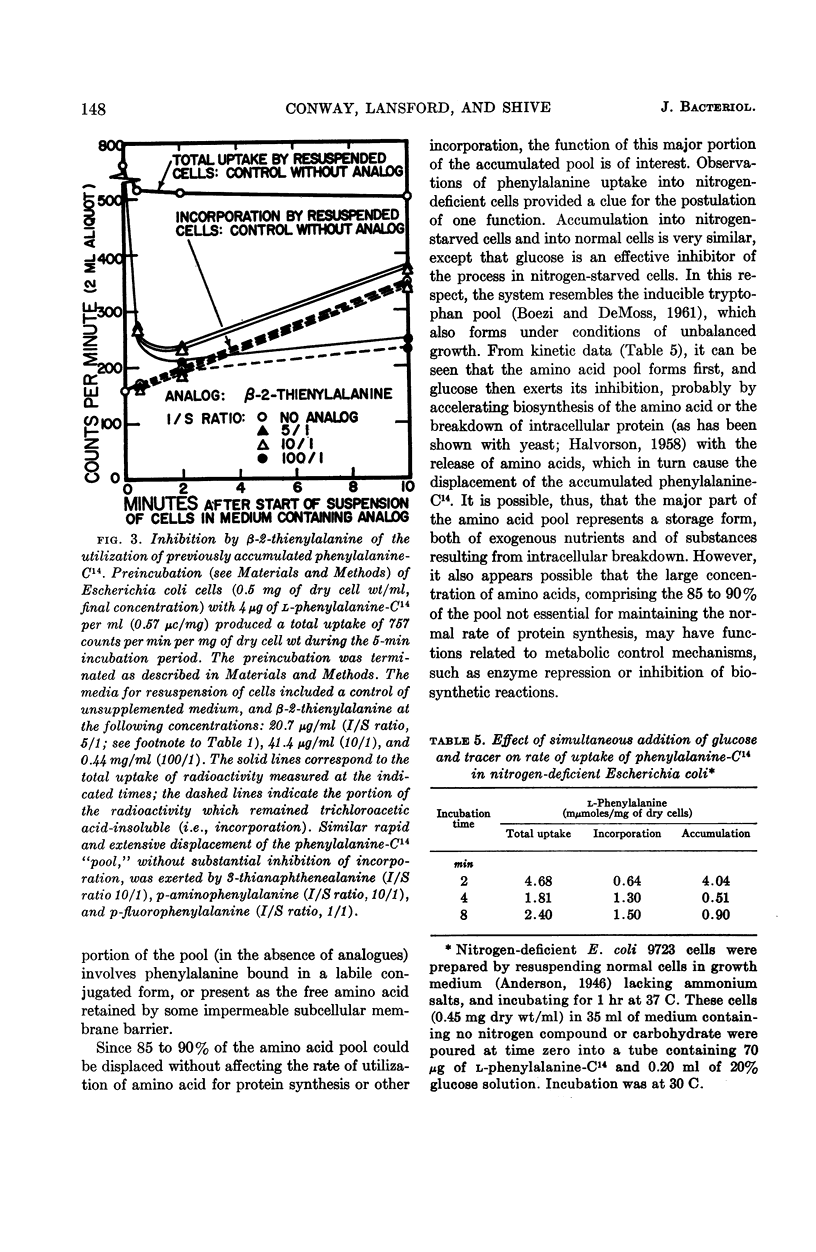
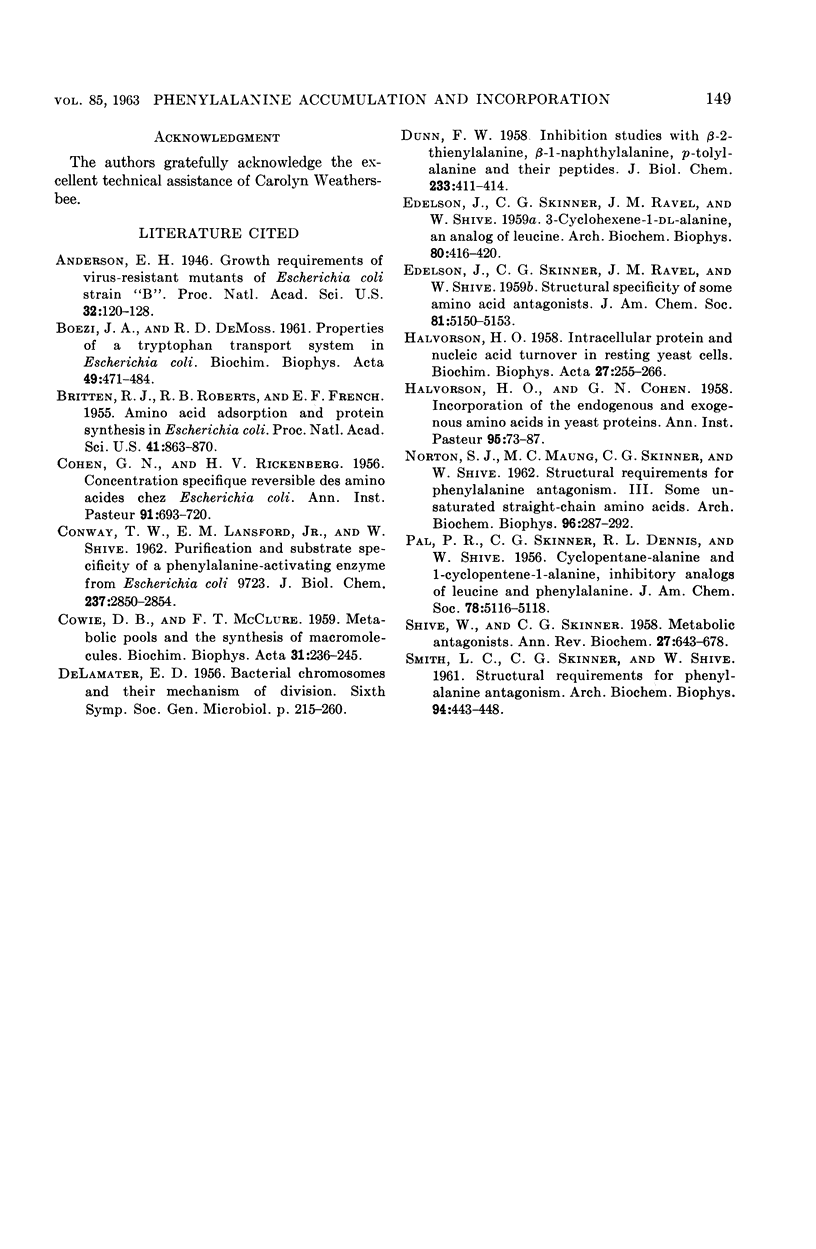
Selected References
These references are in PubMed. This may not be the complete list of references from this article.
- Anderson E. H. Growth Requirements of Virus-Resistant Mutants of Escherichia Coli Strain "B". Proc Natl Acad Sci U S A. 1946 May;32(5):120–128. doi: 10.1073/pnas.32.5.120. [DOI] [PMC free article] [PubMed] [Google Scholar]
- Britten R. J., Roberts R. B., French E. F. AMINO ACID ADSORPTION AND PROTEIN SYNTHESIS IN Escherichia Coli. Proc Natl Acad Sci U S A. 1955 Nov 15;41(11):863–870. doi: 10.1073/pnas.41.11.863. [DOI] [PMC free article] [PubMed] [Google Scholar]
- COHEN G. N., RICKENBERG H. V. Concentration spécifique réversible des amino acides chez Escherichia coli. Ann Inst Pasteur (Paris) 1956 Nov;91(5):693–720. [PubMed] [Google Scholar]
- CONWAY T. W., LANSFORD E. M., Jr, SHIVE W. Purification and substrate specificity of a phenylalanine-activating enzyme from Escherichia coli 9723. J Biol Chem. 1962 Sep;237:2850–2854. [PubMed] [Google Scholar]
- COWIE D. B., McCLURE F. T. Metabolic pools and the synthesis of macromolecules. Biochim Biophys Acta. 1959 Jan;31(1):236–245. doi: 10.1016/0006-3002(59)90460-3. [DOI] [PubMed] [Google Scholar]
- DUNN F. W. Inhibition studies with beta-2-thienylalanine, beta-1-naphthylalanine, p-tolylalanine and their peptides. J Biol Chem. 1958 Aug;233(2):411–414. [PubMed] [Google Scholar]
- HALVORSON H. O., COHEN G. N. Incorporation des amino-acides endogènes et exogènes dans les protéines de la levure. Ann Inst Pasteur (Paris) 1958 Jul;95(1):73–87. [PubMed] [Google Scholar]
- HALVORSON H. Intracellular protein and nucleic acid turnover in resting yeast cells. Biochim Biophys Acta. 1958 Feb;27(2):255–266. doi: 10.1016/0006-3002(58)90332-9. [DOI] [PubMed] [Google Scholar]
- SHIVE W., SKINNER C. G. Metabolic antagonists. Annu Rev Biochem. 1958;27(3):643–678. doi: 10.1146/annurev.bi.27.070158.003235. [DOI] [PubMed] [Google Scholar]


